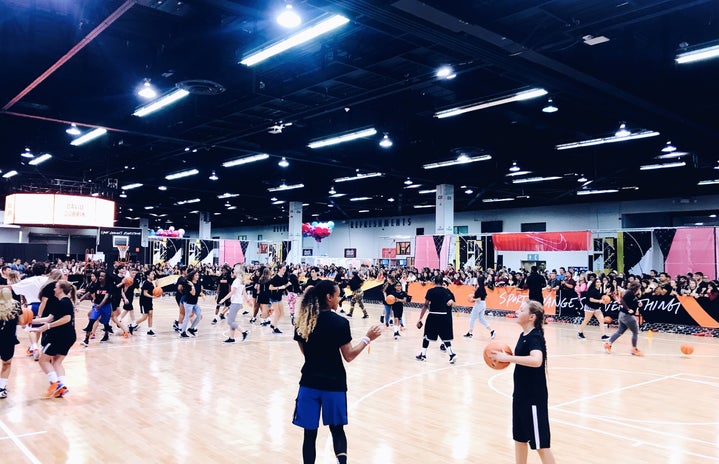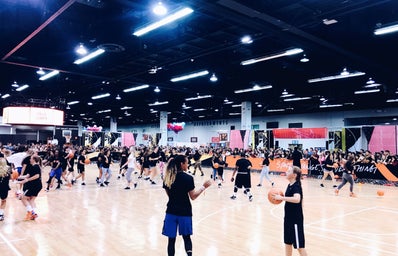I started playing basketball when I was six. When I was little, I never thought about the possibility of there being a gap between my basketball experience and that of boys my age. I never figured people would ever see me as a less impressive or less qualified player than my male counterparts; all I knew was my own experience.
However, as I got older and looked beyond my own life, I realized that I, myself, only ever paid attention to men’s athletics. I only watched men’s basketball on TV. I went to football games, which were the most popular sporting events in high school, but I never attended any girls’ sports games. It wasn’t until I was older that I realized how upsetting it was that women’s sports were seen as insignificant compared to men’s. Though this is a common viewpoint in most sports, it’s particularly common in basketball—and this year, we saw undeniably unequal treatment toward women in the NCAA Division I Tournament.
The NCAA Tournament is college basketball’s biggest stage, a time of excitement and celebration for the players who worked hard to earn a spot on a beloved team. Most importantly, it’s a time where teams do whatever it takes in order to advance in the tournament. For such a special, once in a lifetime occasion, players deserve to have all the equipment that they need to prepare. However, this wasn’t the case for this year’s women’s NCAA Tournament, which was further complicated by pandemic restrictions.
The differences in equipment supplied to the men versus the women were drastic. In the women’s weight room, a small rack of dumbbells and yoga mats were put in an otherwise empty room. In contrast, the men’s weight room was a veritable museum of equipment, with all kinds of weights, machines, and other workout supplies filling the space. On top of that, the difference in March Madness gear was extreme, with men receiving a much larger variety of items and merchandise than the women did. There were also major differences in things like food quality. In simpler terms, it couldn’t have been clearer what and who the NCAA was prioritizing.
The entire situation was brought to light by a coach of the Stanford women’s team, who posted a side by side comparison of the men’s and women’s workout rooms on Instagram. This post went viral all across all social media platforms. A player on the University of Oregon women’s basketball team, Sedona Prince, also spoke out on TikTok and Instagram about the unequal treatment she experienced. These posts prompted the media, basketball fans, and basketball players alike to react and question the NCAA’s actions.
The NCAA initially responded by claiming that the lack of equipment provided to women was due to lack of space, but this was clearly an attempt to save their reputation—as there was more than enough space for more equipment. The president of the NCAA later apologized, backing their statement up by placing more equipment in the women’s weight rooms overnight.
This is just one example of how women are treated differently than men in athletics, often because women’s sports are perceived as boring. This is a socially systemic structure: men are stereotypically seen as in control and praised for physical prowess, while women aren’t.
Looking back, I know what it’s like to feel less important. From an age as young as elementary school, children are taught girls are lesser; boys were taught to expect less from their female peers. When a girl was good at sports, boys thought it was impressive and shocking. There was less faith in us to do well, and part of me thinks this pervasive mindset is why women’s sports are seen as inferior—society tells us we can never live up to their expectations for men.
Aside from sexist sentiments toward women, other issues of funding and systemic sexism are active in the U.S. athletic sphere. Men’s sports are marketed, shown, and treated as main events, and organizations like the NCAA allow it to stay that way. The NCAA could’ve made the tournament equipment and amenities equal among men and women before being publicly pressured, but they didn’t. How can women thrive if they are given less of a chance from the very beginning?
This issue also spotlighted the power social media can have in enacting change. If it weren’t for social media and the strength of players like Sedona Prince, there wouldn’t have been an uproar noteworthy enough to start this conversation and get the women’s teams what they needed. This makes me wonder if, without such tools, there would’ve been any pressure to hold the NCAA accountable. It also makes me wonder why we’ve never addressed similar issues in the past.
I’d argue that this systemic problem starts in places like the playground—or even in simple instances like when a little boy makes fun of a little girl for not being able to make a basket in a way that accuses gender instead of skill. If we begin our lives hearing those disheartening words, how can we really believe in ourselves going forward? Even more strikingly, how can men be expected to think in a more inclusive way?
The NCAA equipment disparities are just a side effect of the deeper issue of the perceived incompetence of women compared to men. Issues like these can only begin to be mended with equal treatment—not just on a stage as big as the NCAA Tournament, but from the ground up.


